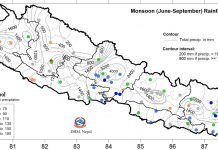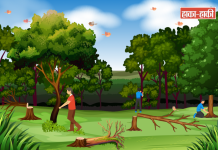A new report by the World Health Organization (WHO) and United Nations Children’s Fund (UNICEF) finds that 2.2 billion people, more than a quarter of the global population, live far below contemporary standards for safe water and sanitation.

The report, Progress on household drinking water, sanitation and hygiene: 2000-2017: Special focus on inequalities, is the most recent publication by the WHO/UNICEF Joint Monitoring Programme, which tracks global progress in achieving the water and sanitation portion of the UN’s Sustainable Development Goals (SDGs).
The 17 SDGs aim to “end poverty in all its forms everywhere” by 2030. Goal 6 calls for universal access to safe and adequate access to drinking water and sanitation services.
According to the new report, progress has been made since 2000, yet billions of people are still underserved. The report delineates between access to basic services, which has greatly improved, and access to “safely managed” services, which is inadequate in many parts of the world.
Only about 45 percent of the global population has access to safely-managed sanitation services. In 2017, an estimated 673 million people continued to openly defecate, most of them in 61 “high burden” countries where the practice remained common among more than 5 percent of the population.
To qualify as being “safely managed,” drinking water must meet three criteria: be accessible on the premises, be available for at least 12 hours per day, and be free from E. coli, arsenic, or fluoride contamination. Sanitation is considered safely managed when facilities are not shared with other households, and waste is safely treated on-site or at an off-site facility.
“Mere access is not enough,” says UNICEF’s Kelly Ann Naylor, associate director of Water, Sanitation and Hygiene (WASH). “If the water isn’t clean, isn’t safe to drink or is far away, and if toilet access is unsafe or limited, then we’re not delivering for the world’s children.”

In 2017, an estimated 5.3 billion people had access to safely-managed drinking water. Of that number, 1.4 billion used basic services, 206 million used limited services, 435 used unimproved sources, and the remaining 144 million relied on untreated surface water.
Poor and rural populations are at the greatest risk of being left behind. In 2017, urban access to basic drinking water services was at 97 percent, while rural coverage was at 81 percent.
In terms of sanitation, an estimated 2.1 billion people gained access to basic services between 2000 and 2017, but 2 billion remain without.
The report also focuses on improvements in eliminating open defecation. Between 2000 and 2017, the global rate of open defecation fell from 21 percent to 9 percent.
In order to meet objectives on drinking water access, sanitation and hygiene services, and open defecation by 2030, Naylor calls for governments to prioritize WASH, especially when it comes to inequalities of access.
“Closing inequality gaps in the accessibility, quality and availability of water, sanitation and hygiene should be at the heart of government funding and planning strategies,” said Naylor. “To relent on investment plans for universal coverage is to undermine decades worth of progress at the expense of coming generations.”
Source : World Economic Forum











